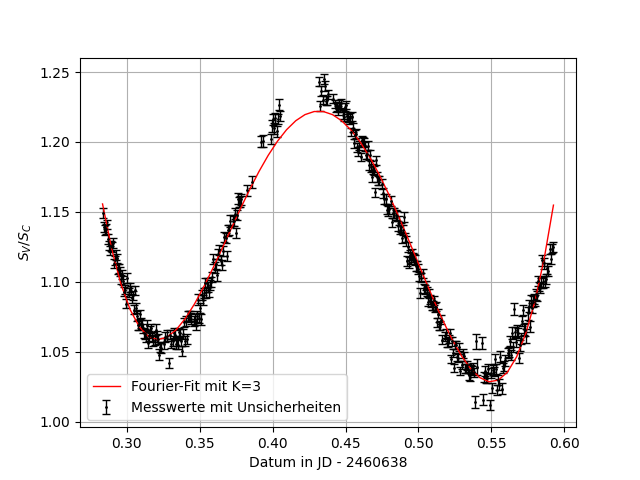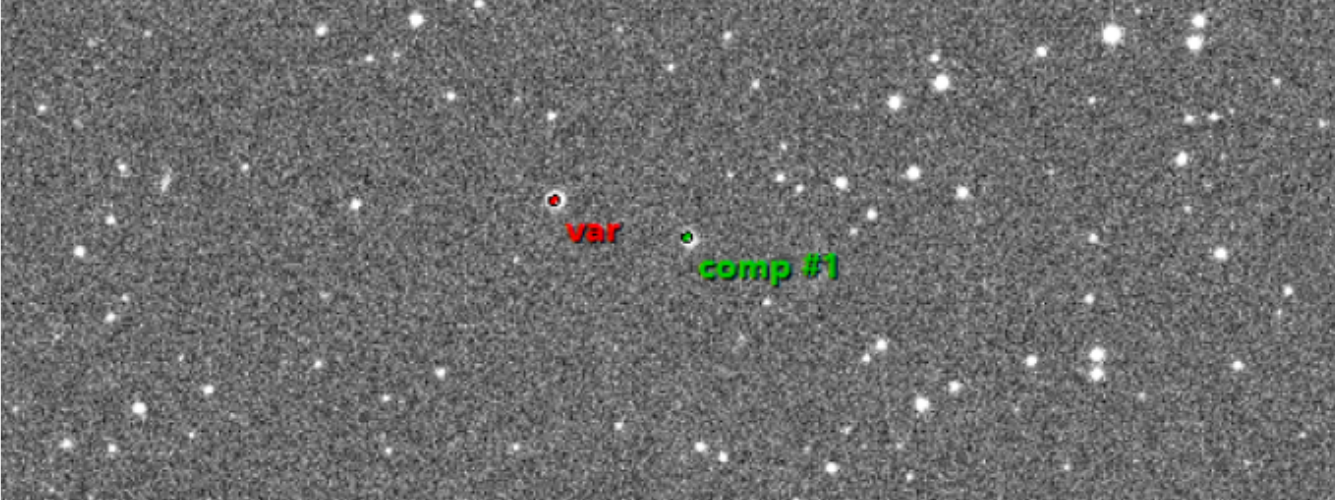Vanessa Grund & Ciyuan Pan
This observation took place as part of our advanced lab course at the TU Darmstadt with the TU’s own telescope system TURMX in Spain. The aim of the experiment was to create a light curve for a pulsating star and determine its period duration and brightness variation. A light curve describes the brightness of the star as a function of time, but can only be carried out in relation to a constantly radiating comparison star. This is specified in terms of the relative radiation flux, which is why the method that has been used in that experiment is called differential photometry.
We chose the star BW-Tri from the constellation Triangle. The observation took place on November 23rd, 2024. It should be annotated that there where poor cloud conditions during that that night and high humidity, which effected the measurement and created gaps in the data sets.
Using a Fourier fit to the 3rd order, we measured a period of 5.366 ±0.0199 h and a brightness variation of 0.18 ± 0.04 mag, which results in an uncertainty of 0.5 % and 28% compared to the literature values (period: 5.339 h, mag. variaton: 0.25 mag) according to the International Variable Star Index. For other orders, the Fourier fit does not deliver suitable results that are close enough to the data sets.


